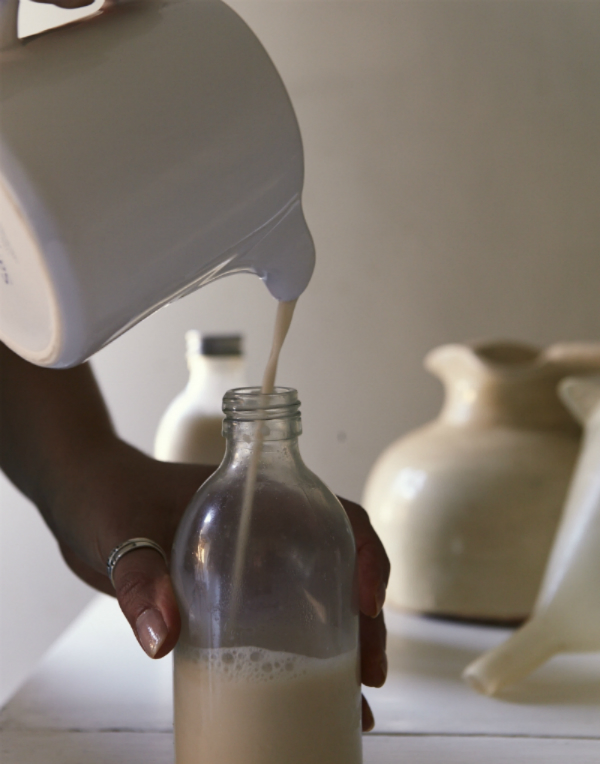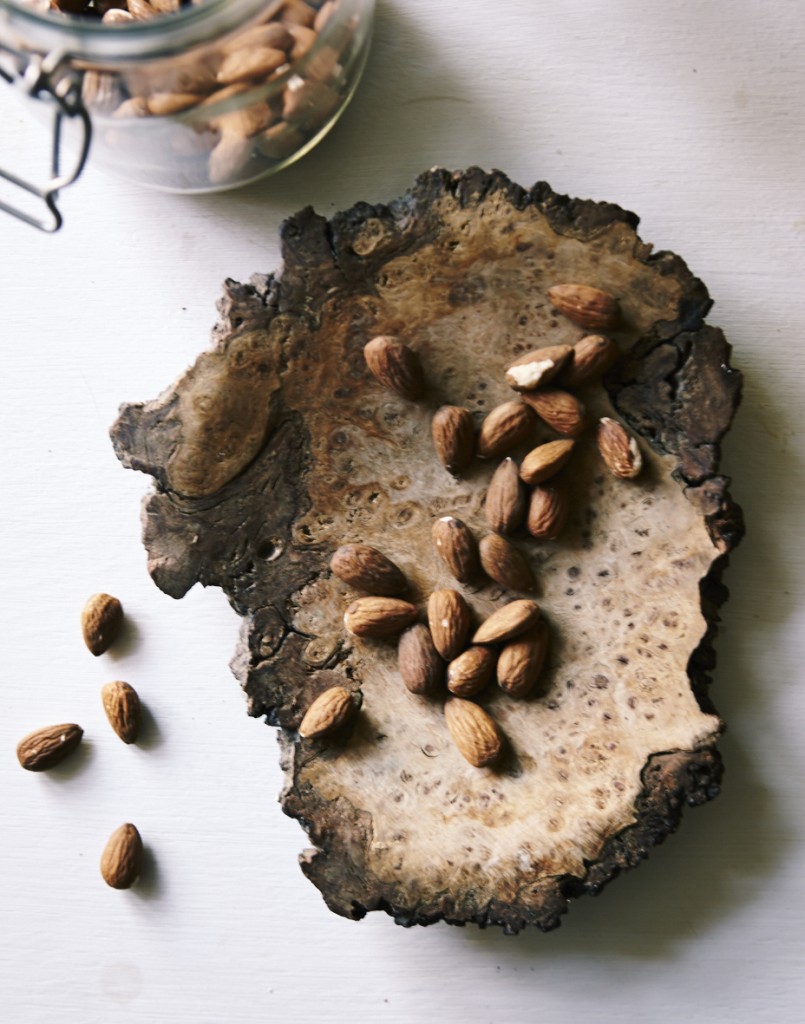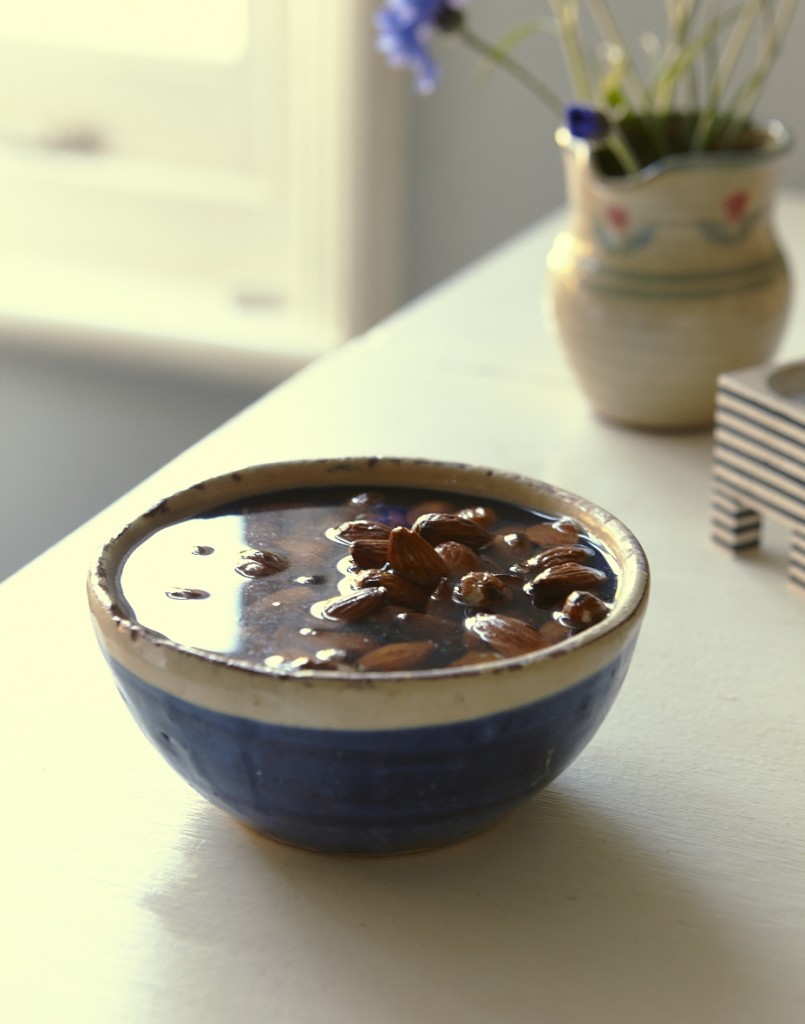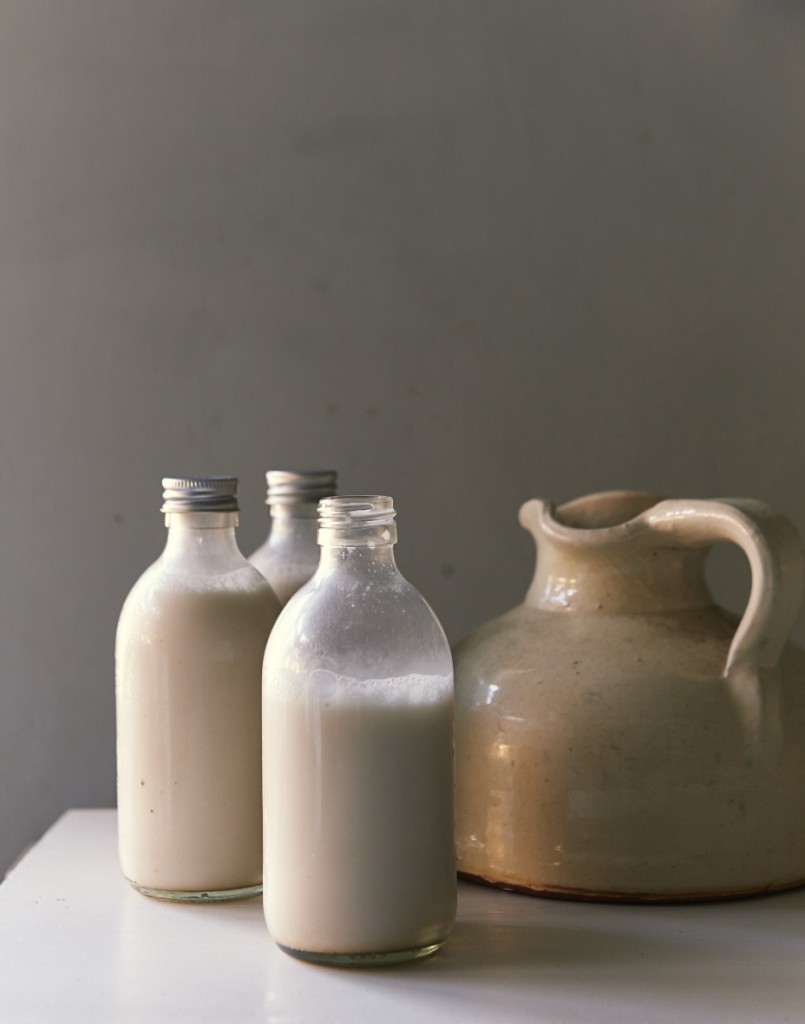I always giggle when I think about the term ‘nut milk’. You may be wondering how on earth you extract milk from something so dry, and how tiny the little udders must be as you’ve definitely never located them before. Almonds aren’t actually milked, it is more of a simple soaking, blending and straining process, which results in a deliciously smooth, creamy liquid, that is wonderful in porridge, smoothies or coffee.
Lactose intolerance is very common and almond milk provides an excellent alternative if you are feeling deprived, or want to see how you feel without dairy for a while. Almond milk is available in the shops, but most brands are full of sugar, highly processed with all sorts of added preservatives and other nasties. So if you’re up for an experiment, give homemade almond milk a go.
How to make almond milk
(Yields about 500ml fresh almond milk)
Ingredients
1 cup whole raw almonds
1/2 teaspoon salt (himalayan, sea or rock salt)
Filtered water
3 dates (optional)
Equipment
Bowls
Blender
Sieve
Measuring cup and measuring jug
Nut bag/ muslin cloth/ cheese cloth
Instructions
1. Soak the almonds for 8-24 hours.Place the almonds into a large bowl and pour over enough water so they are fully immersed. Add the salt and mix with a spoon (the salt helps to get rid of enzyme inhibitors, which can make nuts difficult to digest). Leave them on your kitchen counter to soak.
2. Soak the dates (if using) for 2 hours. Dates add a lovely sweetness to the almond milk, which replicates the sweetness of dairy milk, but it’s completely optional. 2 hours before your almonds have finished their soaking time, pop the dates in a bowl and cover with water. Soaking the dates makes them soft and easier to blend, although if you have a high powered blender such as a Vitamix, the soaking may not be necessary.
3. Drain and rinse the almonds. Don’t keep the soak water from the almonds as it will contain the phytic acid which has come out of the nuts due to the soaking process. Place the almonds in a sieve and give them a good rinse with fresh water Drain the dates also if you are using them.
4. Blend the almonds + dates with fresh water. Place the almonds and dates in the blender and top up with 500ml water. Blend on highest speed for 2-5 minutes, depending on how powerful your blender is.
5. Strain the mixture. Place the nut milk bag/ muslin cloth/ cheese cloth over a measuring jug or bowl. Pour the liquid from the blender into the bag/ cloth, ensuring that it doesn’t flow over the edges.
6. Squeeze out the almond milk. Now pick up the nut bag with one hand (or if using cloth, simply gather up the edges to form a bag with the liquid mixture sitting inside) and squeeze down the length of the cloth with the other hand until all the liquid is squeezed out. Voila!
7. Pour the milk into glass bottles. Keep the milk in the fridge – as it is preservative free and unpasteurised, it will only last for about 2 days, so only make what you think you will use.
- 1 cup whole raw almonds
- ½ teaspoon salt (himalayan, sea or rock salt)
- Filtered water
- 3 dates (optional)
- Soak the almonds for 8-24 hours.Place the almonds into a large bowl and pour over enough water so they are fully immersed. Add the salt and mix with a spoon (the salt helps to get rid of enzyme inhibitors, which can make nuts difficult to digest). Leave them on your kitchen counter to soak.
- Soak the dates (if using) for 2 hours. Dates add a lovely sweetness to the almond milk, which replicates the sweetness of dairy milk, but it’s completely optional. 2 hours before your almonds have finished their soaking time, pop the dates in a bowl and cover with water. Soaking the dates makes them soft and easier to blend, although if you have a high powered blender such as a Vitamix, the soaking may not be necessary.
- Drain and rinse the almonds. Don’t keep the soak water from the almonds as it will contain the phytic acid which has come out of the nuts due to the soaking process. Place the almonds in a sieve and give them a good rinse with fresh water Drain the dates also if you are using them.
- Blend the almonds + dates with fresh water. Place the almonds and dates in the blender and top up with 500ml water. Blend on highest speed for 2-5 minutes, depending on how powerful your blender is.
- Strain the mixture. Place the nut milk bag/ muslin cloth/ cheese cloth over a measuring jug or bowl. Pour the liquid from the blender into the bag/ cloth, ensuring that it doesn’t flow over the edges.
- Squeeze out the almond milk. Now pick up the nut bag with one hand (or if using cloth, simply gather up the edges to form a bag with the liquid mixture sitting inside) and squeeze down the length of the cloth with the other hand until all the liquid is squeezed out. Voila!
- Pour the milk into glass bottles. Keep the milk in the fridge – as it is preservative free and unpasteurised, it will only last for about 2 days, so only make what you think you will use.
Bowls
Blender
Sieve
Measuring cup and measuring jug
Nut bag/ muslin cloth/ cheese cloth





0 Comments